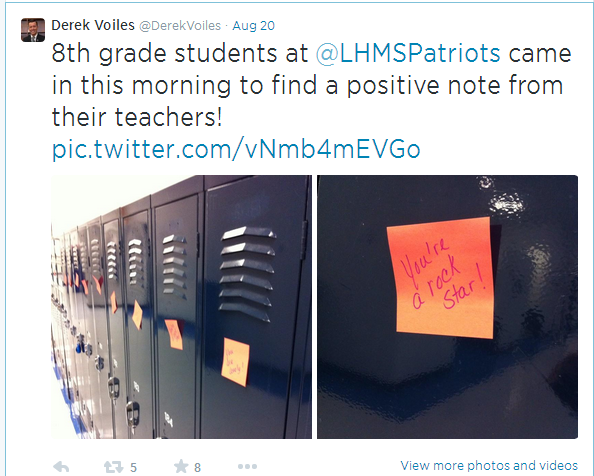You’ve probably seen the Weird Al Yankovich video “Mission Statement” parodying the buzz words that are so commonplace in corporate America (If not click the image below… it’s worth a look).

While “Best Practices” may not be the latest vogue phrase in education, it is used frequently. Google “best practices in public education” and you will get over two hundred million results in less than one full second. The U.S. Department of Education has a site dedicated to best practices. There are best practices clearinghouses for education. The term may be overused, but let’s not throw out the baby with the bathwater. Researching relevant best practices can often help schools better plan and implement initiatives and in some cases, the designers of the practice can provide lessons learned and share resource information.
What are Best Practices in Public Education?
A best practice is a way of doing things that has been found to be successful for accomplishing goals. The term is used to describe “what works.” In a school system a goal might be using data to improve student learning and achievement, increasing parent and community involvement, or improving breakfast participation rates. Regardless of the goal, best practices can help save the trouble of re-inventing the wheel. Often you can customize someone else’s solution to a problem and find a way to address your issue or accomplish your goal. There are as many standards for conferring the best practice label as there are school systems. Some may label any behavior that shows the slightest success a best practice while others prefer having a professional association with strict criteria to confer the label. In short, a best practice can range from a good idea that may not require a lot of resources (e.g. teachers placing positive message sticky notes on students lockers) to a detailed initiative that involves several cross functional teams (e.g., Education Team Excellence Recognition Awards presented by the American Society of Quality each year at their National Quality Education Conference.).

What Should I Consider When Selecting Best Practices for My School System?
Regardless of who gives a method or technique the title of best practice, what matters is whether the practice works (or can work) for you. Here are a few things to keep in mind.
- Does the practice align with our goals? If the practice does not address your specific need or does not have the same aims as you do, it is not necessarily a best practice for you system, school or department.
- Does the practice fit with our community? While a program that worked well in a large urban school system may be adaptable, it may be better for a rural school system to find another program that has a similar population.
- Does the practice fit with our system’s organizational culture and values? A program that relies on a very centralized school system structure may not fit well with a system that has high local school independence.
- What resources does the practice require? It’s imperative to understand what resources (money, personnel, time, skill, etc.) a practice you are considering requires and whether or not your system can provide them before committing to that practice.
Alabama’s Best Non-Instructional Practices Contest
The idea behind recognizing best practices is that they can be used or adapted for use by others. Best practices on the instructional side are well documented. In fact, you are probably inundated with ways to raise test scores, improve summer learning retention, and decrease dropout rates. You may not be as familiar with ways to increase your Meals Per Labor Hours (MPLH) rates in your Child Nutrition Department or improve customer satisfaction in your Transportation Office. These and other non-instructional areas can significantly impact the finances, academics, and community relations of your school system. We are co-sponsoring the Alabama’s Best Non-Instructional Practices Contest in partnership with the Alabama Association of School Boards, to recognize those non-instructional practices and innovations that positively impact student achievement and promote the effective and efficient use of public resources in the state of Alabama. Do you work or are you affiliated with an Alabama Public School? If so, have you dealt with an operational issue or challenge and had good results? Your best practice may be the solution that someone else needs, enter your best practice in our contest today.